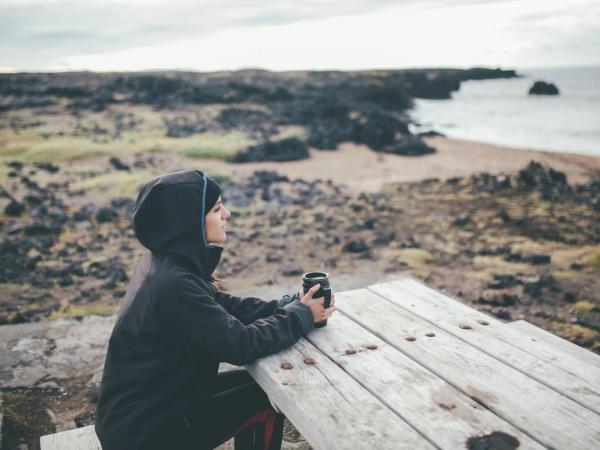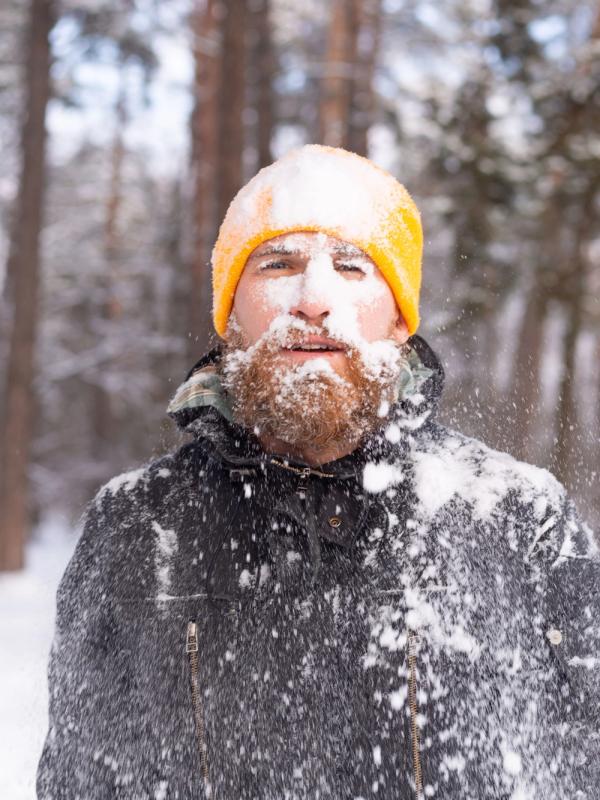
What to Pack to Iceland in December: A Full List of Essentials
Thinking about a trip to Iceland this December? Get ready for an amazing winter adventure! December turns Iceland into a stunning snowy landscape, perfect for seeing the Northern Lights. But with the beauty comes some pretty chilly and unpredictable weather. To make sure you stay comfy and safe, packing the right stuff is key. Here’s a friendly guide to help you get ready for your December trip to Iceland—from must-have clothes to essential gear.
Key takeaways
- Layer Strategically: Combine base, mid, and outer layers with moisture-wicking and waterproof fabrics to stay warm and dry in December’s cold and snowy weather.
- Essential Winter Gear: Bring insulated waterproof boots, thermal gloves and hats, crampons, and a reliable headlamp for navigating icy trails and limited daylight.
- Smart Packing Choices: Pack versatile clothing, protect your electronics, include swimwear for geothermal pools, and carry portable chargers to stay comfortable and connected.
- Avoid Unnecessary Items: To travel light and stay prepared, skip summer clothes, non-waterproof footwear, bulky outfits, single-use plastics, and single-layer garments.
Weather in December
We have a full guide about the weather in December so we won’t extend much, but knowing what to expect weather-wise will help you pack smartly.
- Temperature: It gets really cold, ranging from about -3°C to 2°C (27°F to 36°F). The Arctic chill is strong, and the wind can make it feel even colder.
- Precipitation: Expect more snow and ice, especially inland and in higher areas. Coastal spots might see heavy snowfall and strong winds.
- Daylight: Days are super short, with only around 4-5 hours of daylight. This means you’ll need good lighting for your evening and early morning activities.
- Northern Lights: If the skies are clear, you’ll have a great chance to see the Northern Lights. Just keep in mind that clouds can block the view.

What to Wear in Iceland in December
Layering is your best friend in Iceland’s winter. Here’s how to dress to stay warm and comfy:
Layering System
Having a good layering system lets you adjust your clothes as the weather changes or as you move between activities.
Base Layers (Wicking)
- What: Start with thermal underwear that wicks moisture, like merino wool or polyester.
- Why: These keep you dry and warm by moving sweat away from your skin.
- Tips: Go for long-sleeve tops and leggings that fit snugly and comfortably.
Mid-Layer (Warmth)
- What: Add a fleece jacket or a wool sweater.
- Why: This layer traps your body heat and adds insulation.
- Tips: Choose something lightweight but warm, so you can move easily and stay breathable.
Outer Layer (Windproof and Waterproof)
- What: A top-notch waterproof and windproof jacket, preferably Gore-Tex.
- Why: It protects you from snow, rain, and strong winds while letting moisture escape.
- Tips: Look for jackets with adjustable hoods, ventilation zippers, and sealed seams for extra protection.
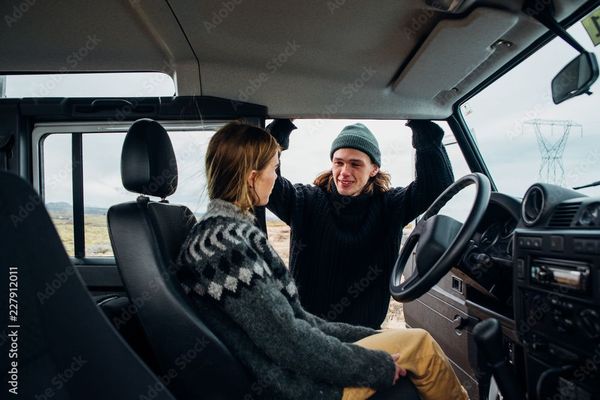
Additional Essentials
These items aren’t part of your layering system but are still super important to keep you warm and safe.
Waterproof Pants
- What: Get a pair of waterproof pants to stay dry in snowy or icy conditions.
- Why: They keep your legs comfortable and dry when you’re walking through wet or snowy areas.
- Features to Look For: Adjustable cuffs to fit over your boots and reinforced knees for extra durability.
Insulated and Waterproof Boots
- What: Sturdy, insulated boots with great traction.
- Why: They keep your feet warm and dry, perfect for walking on snow and ice.
- Features to Look For: Waterproof materials, deep treads for better grip, and good ankle support.
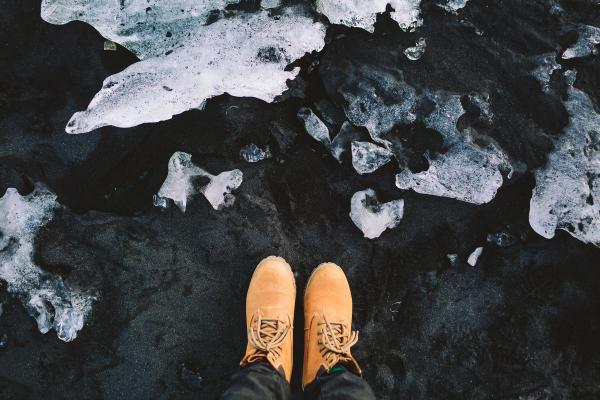
Thermal Socks
- What: Thick wool or synthetic thermal socks.
- Why: Wool stays warm even when it’s wet, which is perfect for icy activities.
- Tips: Bring several pairs so your feet stay dry and warm all day.
Gloves and Mittens
- What: Waterproof and insulated gloves or mittens.
- Why: Keeps your hands warm and dry in freezing temperatures.
- Tips: Mittens are often warmer than gloves since they trap heat better.
Hat and Scarf
- What: A warm hat that covers your ears and a thermal scarf or neck gaiter.
- Why: Protects your head, neck, and face from the biting winds and frostbite.
- Tips: Choose materials like wool or fleece that keep heat even when wet.
Essential Gear to Bring to Iceland in December
These items help you navigate Iceland’s winter landscapes safely and comfortably.
Crampons or Ice Cleats
- What: Attachments for your boots to give you extra grip on icy trails.
- Why: Prevents slips and falls on slippery surfaces, especially near glaciers and frozen waterfalls.
- Tips: Make sure they fit your boots and are easy to put on and take off.
Headlamp
- What: A reliable headlamp with extra batteries.
- Why: With limited daylight, you’ll need good lighting for evening and early morning activities.
- Tips: Choose one with adjustable brightness and a comfortable strap.
Swimwear
- What: Don’t forget your swimsuit for Iceland’s geothermal pools like the Blue Lagoon.
- Why: Soaking in warm waters is a perfect way to relax after a day in the cold.
- Tips: Bring a quick-drying swimsuit and flip-flops for entering the pools.
Waterproof Backpack
- What: A waterproof backpack or a durable rain cover.
- Why: It keeps your gear dry in the ever-changing weather.
- Features to Look For: Multiple compartments, ergonomic straps, and compatibility with rain covers.
Accessories
These extras make your trip more comfortable and protect your skin and electronics.
- Moisturizer and Lip Balm: The cold, dry air can dry out your skin and lips, so bring rich moisturizers and lip balm.
- Portable Charger: Cold weather can drain batteries quickly, so a portable charger ensures your devices stay powered.
- Camera Gear: To capture Iceland’s winter beauty and the Northern Lights, bring a sturdy tripod and extra batteries since the cold can reduce battery life.
Essential Packing List for Iceland in December
Here’s a handy list to make sure you have everything you need:
Clothing
- Base Layers: Merino wool or synthetic thermal underwear
- Mid Layers: Fleece jacket or insulated sweater
- Outer Layers: Waterproof and windproof jacket (Gore-Tex recommended)
- Waterproof Pants: Snow and rain-resistant
- Insulated Boots: Waterproof with deep treads
- Thermal Socks: Multiple pairs of wool or synthetic thermal socks
- Gloves and Mittens: Waterproof and insulated
- Hat and Scarf: Wool or fleece hat and thermal scarf or neck gaiter

Gear
- Crampons/Cleats: For icy paths
- Headlamp: With extra batteries
- Swimwear: For geothermal pools
- Waterproof Backpack: With rain cover
- Camera Gear: Waterproof covers, extra batteries, sturdy tripod
- Portable Charger: High-capacity power bank
Accessories
- Moisturizer and Lip Balm: To protect against dry skin
- Hand Warmers: For added comfort during long outdoor activities
Electronics
- Camera: With necessary accessories
- Smartphone: For navigation and communication
- Portable Charger/Power Bank: To keep devices charged
Miscellaneous
- Energy Snacks: High-energy foods like protein bars and nuts
- Neck Gaiter: Versatile protection for the neck and face
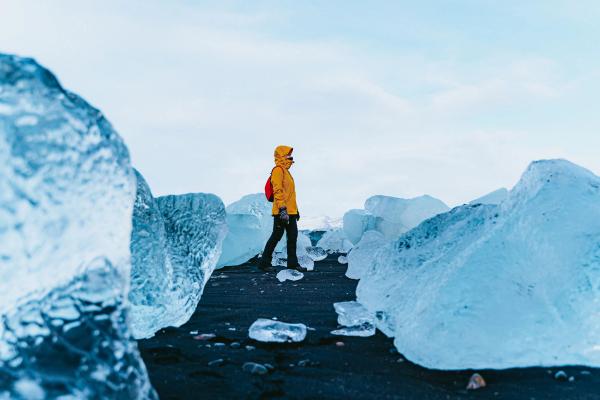
What Not to Pack for Iceland in December
Packing smart means knowing what to leave behind. Here are some things you can skip to travel lighter and stay comfy:
Lightweight Summer Clothing
- T-Shirts and Tank Tops: Too warm for Iceland’s December chill.
- Shorts and Skirts: Don’t offer enough protection against the cold and wind.
Non-Waterproof Footwear
- Sandals and Flip-flops: Not suitable for snow and ice for everyday life.
- Canvas Shoes: Lack the insulation and waterproofing you need.
Heavy Bulky Clothing
- Overly Thick Jackets can make layering difficult. Opt for insulated, lightweight, waterproof jackets instead.
- Heavy Denim Jeans: Choose moisture-wicking thermal pants for better insulation and dryness.
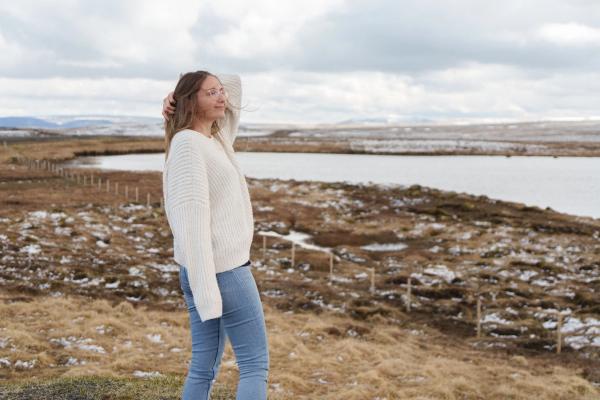
Non-Layered Clothing
- Single-Layer Outfits: Layers are essential for adjusting to changing weather.
Heavy Jewelry
- Unnecessary Weight: Can be uncomfortable with layered clothing and while being active.
Non-Waterproof Bags
- Standard Backpacks: They won’t protect your gear from wet conditions. Choose waterproof backpacks instead.
- Fabric Suitcases: Hard to manage on rugged, icy terrain.
Sun Protection for Summer
- Sunscreen and Sun Hats: Less critical in winter. Focus on windproof and waterproof accessories instead.
- Light Scarves and Bandanas: Offer minimal protection against the cold and wind. Go for thicker thermal scarves.
Extra Heavy Footwear
- Snow Boots Not Designed for Hiking: Opt for versatile, insulated hiking boots instead.
Non-Thermal Sleepwear
- Regular Pajamas: Thermal sleepwear can make your nights more comfortable in the cold.
Disposable Items
- Single-Use Plastics: Reduce waste by bringing reusable water bottles and utensils.
Camping Gear (Unless Specifically Planned)
- Tents and Sleeping Bags: Most accommodations are well-equipped. Only bring if you’re on a dedicated winter camping trip with proper gear.
Additional Tips
- Battery Management: Cold weather can drain batteries fast. Always carry portable chargers and keep your devices as warm as possible.
- Protect Your Gear: Use waterproof covers for backpacks and camera equipment to keep them safe from moisture.
- Stay Energized: Bring high-energy snacks to keep your energy up during outdoor adventures.
- Skin Care: Regularly apply moisturizing products to fight the drying effects of cold, windy air.
- Layer Flexibly: Dress in layers that you can easily add or remove to adjust to different temperatures and activities.
- Plan Versatile Outfits: Mix and match your clothes to create different outfits without overpacking.
- Check Airline Baggage Policies: Avoid extra fees by reviewing your airline’s baggage rules ahead of time.
Conclusion
Packing for Iceland in December might feel a bit daunting with all the cold and unpredictable weather. Still, with the right preparation, you can fully enjoy the breathtaking landscapes and unique experiences the country has to offer. Focus on layering your clothes, invest in high-quality waterproof and insulated gear, and bring essential accessories to stay warm and dry. By following this friendly packing guide, you’ll be all set to embrace your December adventure in Iceland, whether you’re exploring icy terrains or soaking in geothermal hot springs under the mesmerizing Northern Lights.


